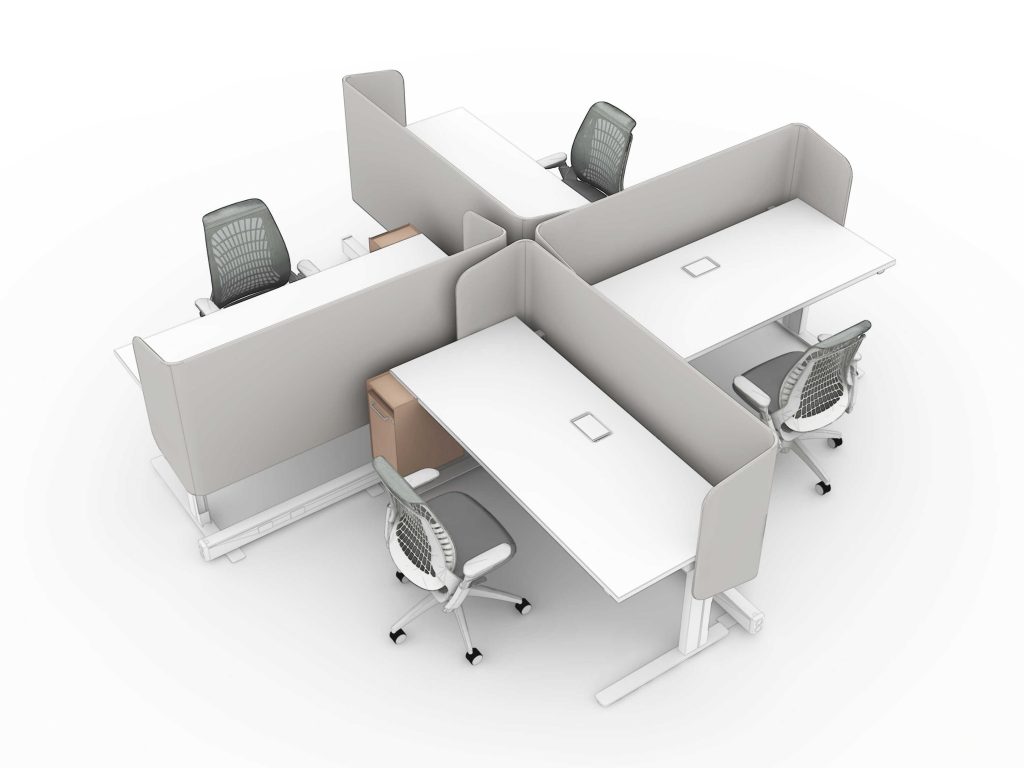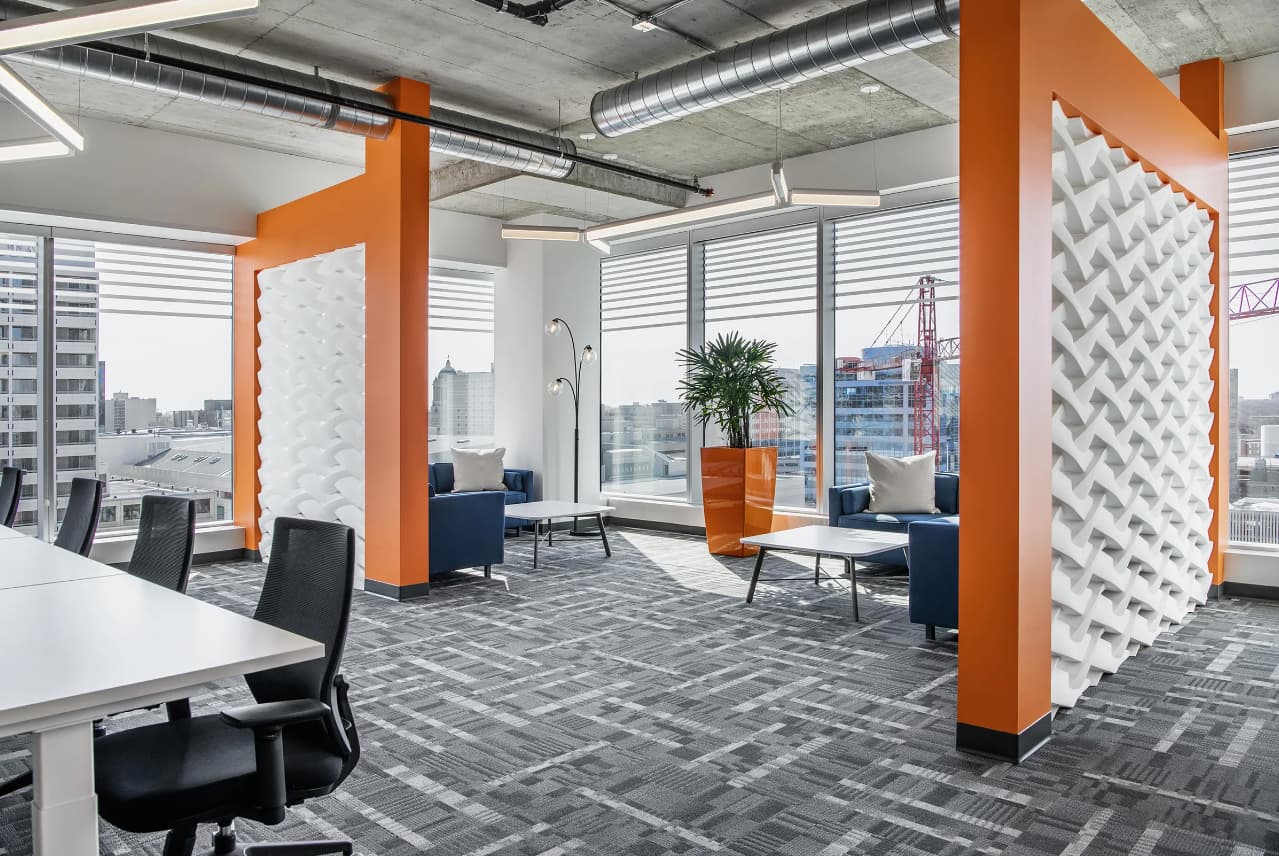The world we live in today is vastly different from the one we lived in just a few short years ago. When COVID-19 took over and cases began to climb, businesses were forced to adapt to new ways of doing things. Many employees, particularly those working in offices, were no longer permitted to come to work. People packed up their computers and began working from home.
It was an adjustment for everyone, and adjustments can be complicated. Employees had to set up a workstation in their home, hold meetings virtually, create boundaries between their work and personal lives (where they could), and get used to spending their working hours alone as the hustle and bustle of office life disappeared, seemingly overnight.
Back to the Office—It’s Natural to be Nervous
Now, though, the world is falling back into its previous rhythm. Life is returning to normal: a new normal. Restrictions are being lifted because the number of COVID-19 cases has dropped, and the severity of new cases has lessened. The forced work-from-home movement is coming to an end. Everyone is feeling mixed emotions about going back to the office: excitement, anticipation, fear, anxiety, and apprehension, to name a few.
Understand that these feelings are perfectly natural and okay. While we want to minimize any unpleasant feelings in our employees, acknowledging them is just as important. Everyone deals with change in their own way; it’s our job to make people feel as comfortable as possible during the transition from home to the office.

Understand Everyone’s Point of View
Let’s be honest. No matter how robust your return-to-work plan is for your employees, there will be people who are reluctant to embrace the return. Working from home gave people more freedom, so don’t expect all your employees to be happy about returning to the office (at least initially). Working from home was an adjustment, just like returning to the office will be.
Many people felt the benefits that working from home offered:
- No longer had to commute to work
- Allowed to design their workspace
- Could eat lunch in their own kitchen
- Saved on childcare costs
- Ability to work in sweatpants!
Many came to enjoy the flexibility that working from home offered and losing that flexibility may cause apprehension among some people. Not only that, but some employees may still be concerned about contracting COVID-19. Businesses should acknowledge these concerns and take steps to alleviate them.
While some people enjoyed working from home, many found themselves missing the day-to-day happenings of office life.
Here are some of the most common reasons people missed being at work:
- Having a routine
- Having face-to-face meetings
- Working in a collaborative team
- Mentorship and training
- The boost in creativity and productivity
- Separation between work and home life
Regardless of where your employees fall on the spectrum, life is changing once again. Some businesses are making the location-flexible working model permanent; others are mandating a return to the office full-time.

Worries About the New Normal
There are ways to reduce worries. An empathetic leader who cares for their employees’ feelings will help re-build connections. It will also alleviate much of the stress associated with returning to the office. Understanding and being patient regarding your employees’ struggles will go a long way in showing them that you care. Address the new normal and the changes it brings by asking yourself the following questions:
- How do we minimize the spread of COVID-19?
- What do we need to know to set our employees up for a triumphant return?
- How do we re-invigorate everyone and get their creative juices flowing?
Safety and Seating to Minimize Contact with Others
To best prepare for the return of your employees, it’s necessary to understand their comfort level about returning. Ask your employees how they are adjusting to being back in the office or if there is anything you can do to help, and then implement their suggestions where and when you can. According to a study done by Gensler, 70% of people want to spend most of their workweek in the office, but they want to see that space is created for physical distancing.
If possible, consider the layout of your office from the perspective of what a “post-COVID-19” office should look like. If you can, arrange your space to allow employees to be spread apart. It’s been a few years since we’ve all been together, and people have become used to having their own space.

How to configure workstations to support physical distancing and provide an autonomous space:
- Add Privacy Screens and a Pod Configuration: If your employees sit at individual desks, consider adding a table screen to each desk and arrange the desks in a pinwheel or pod formation. This keeps your employees close enough to interact while also creating a physical barrier between them.
- Create Space with Alternate Seating: If your employees work on one long table and space allows, you could move your employees further apart by leaving every other seat empty. With this setup, staff will continue to experience the communication benefits of an open space design while safety and physical distancing are promoted.
- Raise Cubicle Walls and Add Doors: To physically distance, consider extending the height of cubicle walls and adding sliding doors, giving an added sense of privacy and safety.
Mindset Matters
Remember that change is difficult and didn’t just happen once: it occurred repeatedly and in different ways. While your employees are busy adjusting to their return to the workplace, you should foster an environment of positivity, creativity, and collaboration. Be mindful of your employees’ mindsets and how their lives have been forcefully shifted so many times over the past few years.
The following ideas may help your employees get enthusiastic about being back at work:
- Engage with your employees before their return and answer questions they might have.
- Host a welcome back week.
- Allow for flexibility in your workers’ schedules.
- Splurge on a staff lunch or coordinate potluck lunches.
- Make break areas feel like home with touchdown areas, soft seating, and snacks.
- Create a contest with prizes.
- Organize an optional after-hours activity like go-carting, volunteering at a charity, taking a cooking class, or joining a trivia night.
- Re-design the company dress code if possible.

Benefits of Being in the Office
There are many benefits of being in the office. Find a way to remind your staff of them because it will help them adjust to the return much more quickly:
- Increased collaboration and innovation: Collaboration comes easier when everyone is together in the office.
- Increased team productivity: It’s easier to get things done because tracking someone down means walking over to their desk. Productivity, for many, increases when you are in a place designated for work.
- Positive impact on mental health: Being around others and socializing is good for mental health. Culture building and connection happen when co-workers surround you.
- Better work-life balance: When you work in an office, you can leave your work at work at the end of the day—most of the time. 😉
The New Normal
Your strategies for achieving a successful return to the office may feel complicated, but it doesn’t have to be. With some forethought and willingness to be flexible, you will get there. Be empathetic to your employees’ concerns, listen to their ideas, take steps to keep them safe, and organize events to re-engage them. If you practice consistency, everything will return to normal—a new normal; maybe even a better normal.
If you need help designing a new space or re-designing an old one, we would love to hear from you. Creating productive, comfortable, and collaborative corporate workspaces is what we do, so reach out today.
To learn more on this topic, see the following reference materials we used in creating this article:
5 Ways to Get Employees Excited to Return to the Office: https://horizantsolutions.com/return-to-office/5-ways-to-get-employees-excited-to-return-to-the-office/
Insights From Gensler’s U.S. Work From Home Survey 2020: https://www.gensler.com/blog/insights-from-genslers-u-s-work-from-home-survey-2020
Don’t Let Returning to the Office Burn Out Your Team: https://hbr.org/2021/11/dont-let-returning-to-the-office-burn-out-your-team
Top reasons staff have missed the office during COVID-19: https://www.meridianbs.co.uk/blog/2020/10/top-reasons-staff-have-missed-the-office-during-covid-19


.jpg)
.jpg)
.jpg)